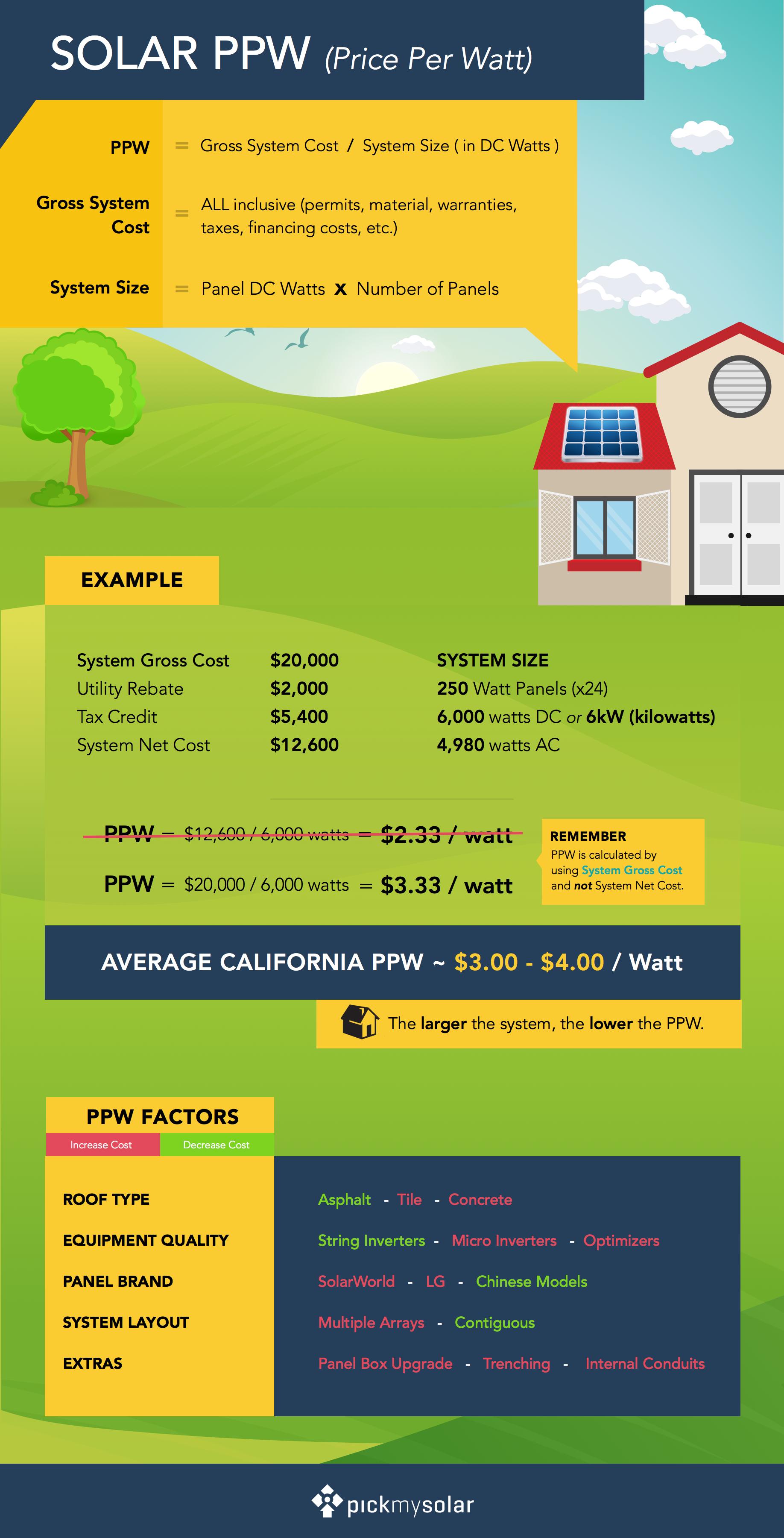Why You Need To Know Your PPW When You Go Solar
Before even speaking with a solar company there are a few things you need to know in order to ask the right solar questions. Understanding the cost of solar is at the top of the list.
Price Per Watt (PPW) is how installers price out a solar system, allowing you an easy way to compare prices from different installers (aside from our incredible online solar marketplace). Price Per Watt is exactly as it sounds – the price for each watt of solar you are purchasing. PPW only applies for purchased systems and is not a factor you can look at for a standard Lease or PPA option.

The Price in PPW should be based off the whole system price, including all tax credits and incentives. The Watts is based off on installed DC watts, which can be found by adding up the wattage of all the panels being installed. For simplicity, solar systems are generally measured in terms of kilowatts (kW), rather than watts. To find the number of watts, simply multiply the kWs by 1,000.
Here’s a quick example: If you buy a 6kW (6,000 watts) system and the cost is $20,000 before any credits, the system PPW is $3.33 per watt ($20,000/6,000 watts). On that $20,000 you may receive a 30% tax credit and even additional rebates depending on your utility. Assuming you qualify for the full tax credit, the system’s net cost to you is $14,000.
If you are given an advertised PPW by the installer, make sure it meets all of these criteria:
- The price is the gross price of the system. In the example above, if the installer uses the net price ($14,000) and divides by the 6,000 watts, the PPW comes out to $2.33/watt. This is NOT the appropriate number to compare against other price quotes.
- The watts that you are looking at should be DC watts. On some quotes, you may see AC watts along with kWh (kilowatt hours). When computing PPW, make sure you are using DC watts.
- The price should include EVERYTHING. Some installers may break down different aspects of the system. They may give you a gross cost and then have some additional costs for permits or other variables. This is not the appropriate way to quote prices in the solar industry. The labor, material, financing, overhead, warranties, permits, and engineering are all typically wrapped into one base cost. In solar, this is just how it is done. It’s a full package deal and most installers do not break down the costs.
Here are some key factors that affect PPW:
- Equipment Quality: Brand name solar panels such as SolarWorld or LG are going to be more expensive than Tier 2 Chinese panels. The type of string or micro inverter used can lead to a price difference of as much as 35 cents per watt.
- Roof Type: If you have a composite shingle (asphalt) roof you are in the lower end of costs for installation. Installing on a tile roof can increase system costs by as much as 10%. Steep roofs and ground mounts add more costs as well.
- Multiple Arrays: If your roof is a simple A-frame, the costs will be much less than a roof with panels being mounted on multiple surfaces.
- Extras: If you need a panel box upgrade or trenching, you will be looking at some higher costs. A panel box upgrade typically costs between $1,500 and $3,000, while trenching will depend on the distance the conduits are required to be buried.
There are many more factors that will affect PPW, with the largest difference maker being system size. As a system gets larger in size, many of the costs do not increase proportionately, leaving you with a lower PPW.
Your all-in PPW for a solar system in California should be between $3.00 and $4.00 per watt depending on the variables. The only time you may see a price above $4/watt is if you choose high-end SunPower panels or if your system is smaller than 4kW. Other than that, if you see a price above $4/watt, it’s time to find some more bids.







